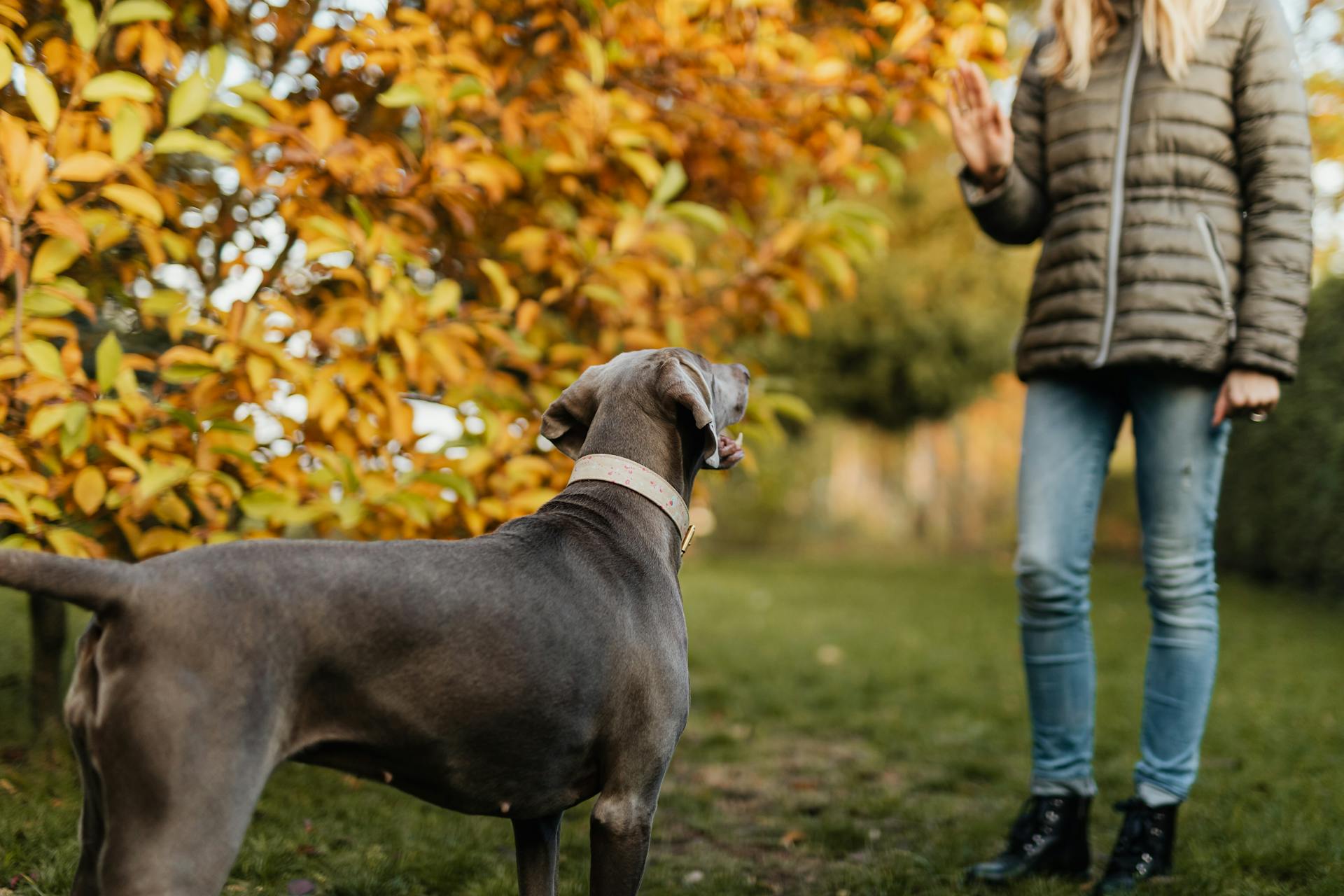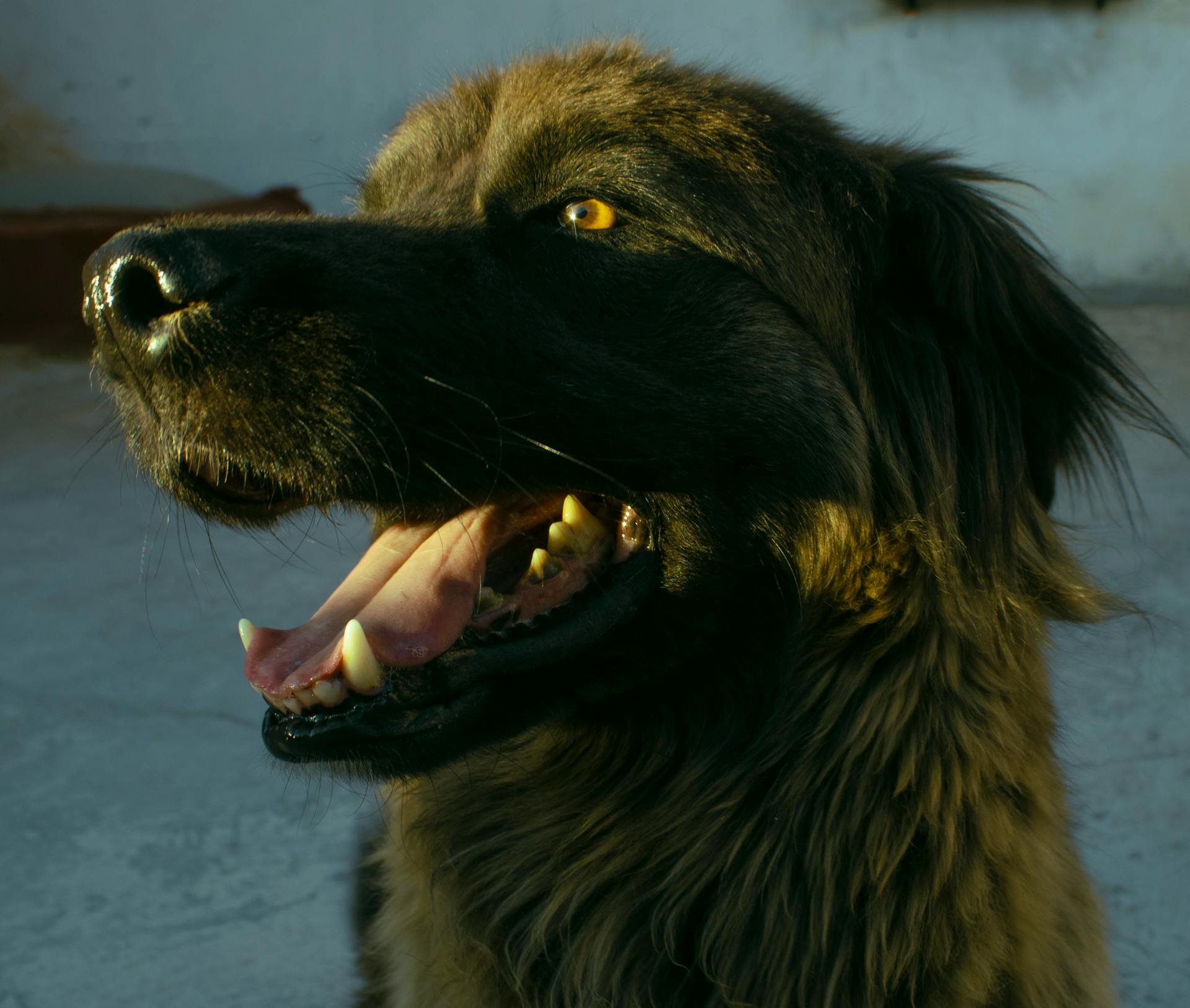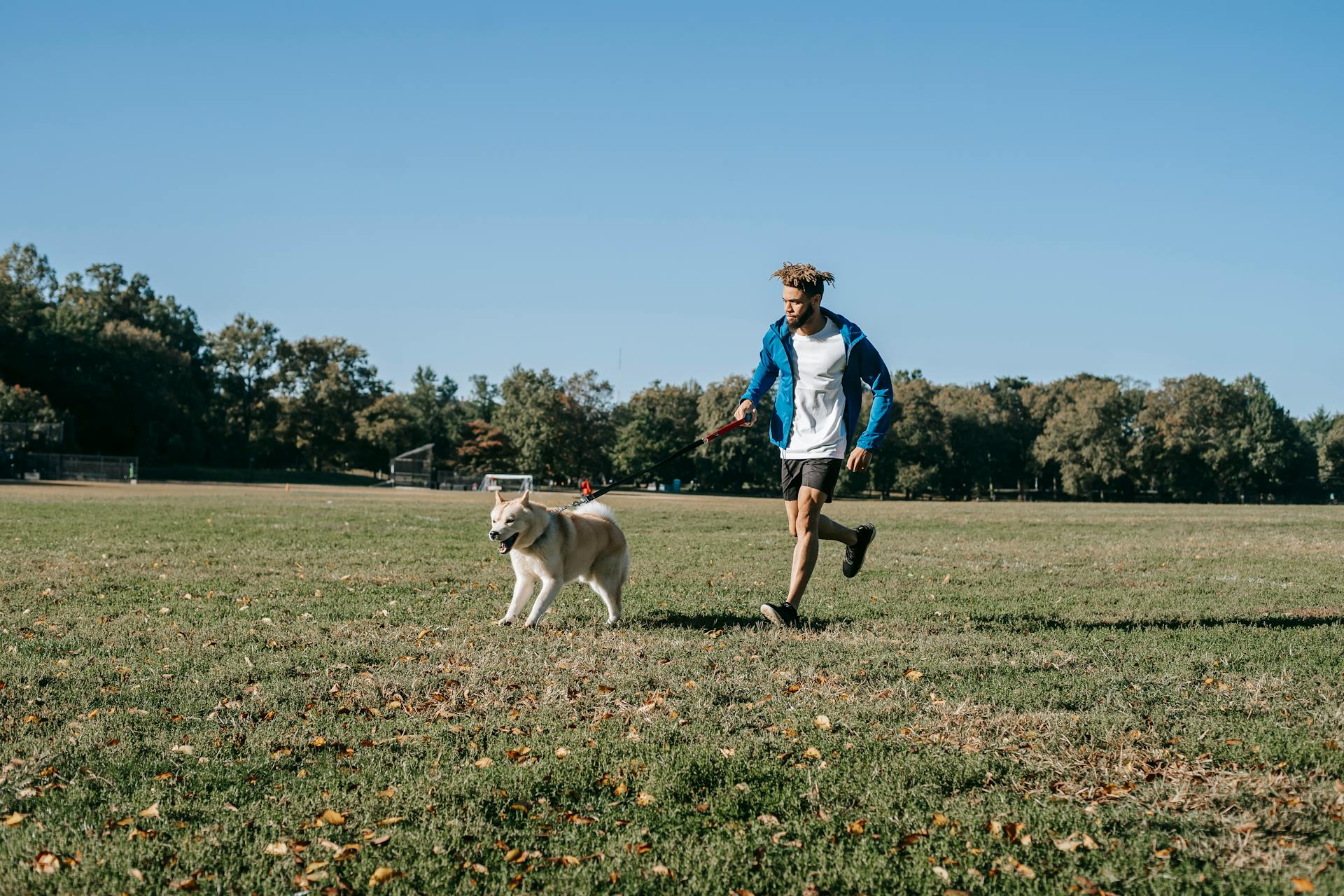
Male Boerboels are naturally protective of their families, making them excellent watchdogs. They have a strong instinct to defend and care for their loved ones.
To ensure a harmonious household, male Boerboels need early socialization and training from an experienced owner. This helps them understand what behavior is acceptable and what's not.
Male Boerboels are generally gentle with their families, but can be wary of strangers, especially if they're not well-socialized. With proper training and socialization, they can become great companions for families with children.
Male Boerboels require regular exercise and mental stimulation to prevent boredom and destructive behavior. They need at least 30 minutes of exercise and playtime per day.
Physical Characteristics
The male Boerboel is a large dog with a sturdy build, averaging 24 to 28 inches in height at the shoulder.
Males typically weigh between 110 and 200 pounds, although some can be larger or smaller.
Their head is a distinctive feature, being blocky, broad, deep, square, and muscular, with a moderate stop and well-developed muscles.
The muzzle blends smoothly with the skull, and the nasal bone measures approximately one-third the total length of the head.
Their neck is medium in length, powerful, and arched, gradually increasing in width from the head to the shoulder.
Their forequarters are well angulated, well-muscled, and matched with the angulation of the hindquarter for optimal mobility.
Their torso has adequate width and depth, with a level, straight-appearing topline and a defined muscular ridge above the withers.
Their hindquarters are well angulated, well-muscled, and deep and broad, with the croup being broad and of good length.
Their hocks are strong and sturdy, of medium length, and parallel and in line with the rest of the leg when viewed from the rear.
General Appearance
The Boerboel is a large dog with strong bone structure and well-developed musculature. Its impressive demeanor is created by a combination of conformation, carriage, confidence, and powerful, buoyant movement.
The skin on the body is relatively loose-fitting and flexible, without major wrinkles. This loose-fitting skin helps the dog move freely and comfortably.
The Boerboel's body is slightly longer than tall, being approximately 10 to 15 percent longer, measured from the breastbone to the point of the rump, than the height measured at the withers. This unique body shape allows for optimal mobility and flexibility.
The Boerboel is a well-balanced dog with all body parts in proportion to each other, and with the sexes being clearly distinguishable in appearance. This balance between the dog's size and proportions is essential for its athletic working abilities and stamina.
Disqualifications for the breed include unilateral or bilateral cryptorchidism, which is a condition where one or both testicles fail to descend into the scrotum.
The Neck
The neck of the Boerboel is a strong and powerful feature, gradually increasing in width from the head to the shoulder. This gives the breed a distinctive appearance.
The neck is of medium length, so it's not too short or too long. This length allows for a good balance of strength and agility.
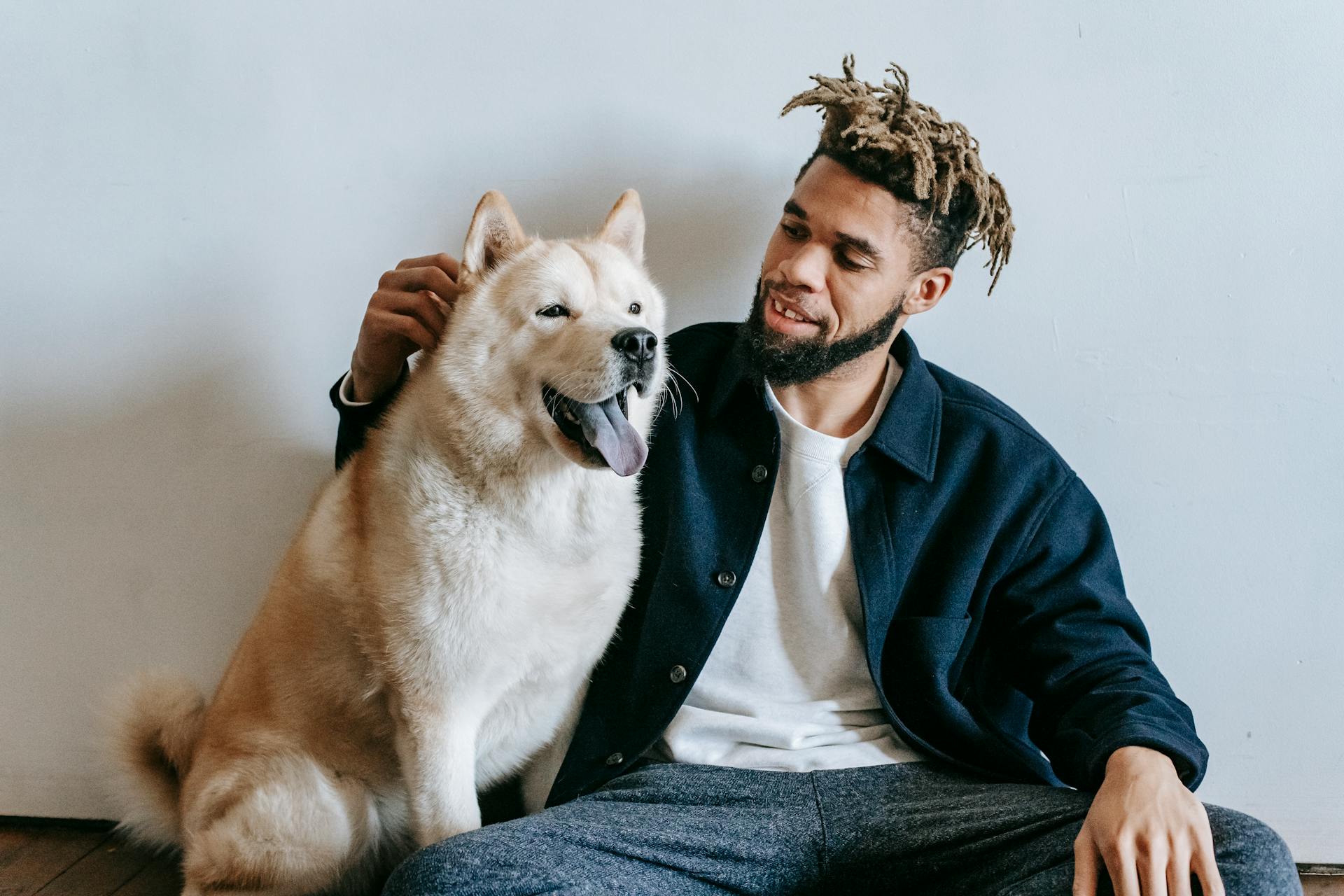
The neck has an arched crest, which adds to its muscular appearance. This is a notable feature that sets the Boerboel apart from other breeds.
The skin on the neck is tight across the sternum, with no excessive skin visible. This is a desirable trait, as it indicates good muscle tone and a healthy coat.
Coat Color and Grooming
Male Boerboels have a short, straight overcoat that's smooth and shiny, covering their soft, dense undercoats.
Their coat can be shades of red, fawn, brown, brindle, or black, with some having spots of white on their coat, especially around the neck, face, and paws.
Weekly brushing and monthly baths should help catch the shedding fur and keep their coat healthy, as they shed an average amount.
Many male Boerboels have dark markings around their eyes, mouths, and noses, and some have dark patches around their paws.
It's considered a fault if more than 30 percent of their coat is white.
Their coat sheds moderately, so weekly brushing can reduce the shedding.
Male Boerboels have a short, dense coat that's relatively low-maintenance to groom.
Health and Care
Male Boerboels are generally a robust and healthy breed, but like all breeds, they can be prone to certain health issues. Hip dysplasia, heart disease, eye conditions, vaginal hyperplasia, bloat, and juvenile epilepsy are all potential health concerns that can affect males of this breed.
Regular care is essential to maintaining your male Boerboel's health. This includes regular exercise and play to keep them mentally and physically stimulated. Their nails should be trimmed about once every two weeks, and their teeth should be brushed regularly as recommended by a veterinarian.
To keep your male Boerboel's coat looking its best, a monthly bath and an occasional dip are all that's needed. They have an average shedding rate, making regular grooming a breeze.
Broaden your view: How Old Do Male Dogs Have to Be to Breed
Health
The Boerboel breed is generally considered robust and healthy, but like any breed, they can be prone to certain health issues.
Hip dysplasia, a condition affecting the hip joints, is one potential issue. This occurs when the bones of the hip joint don't align properly, causing the joint to deteriorate and lose function.
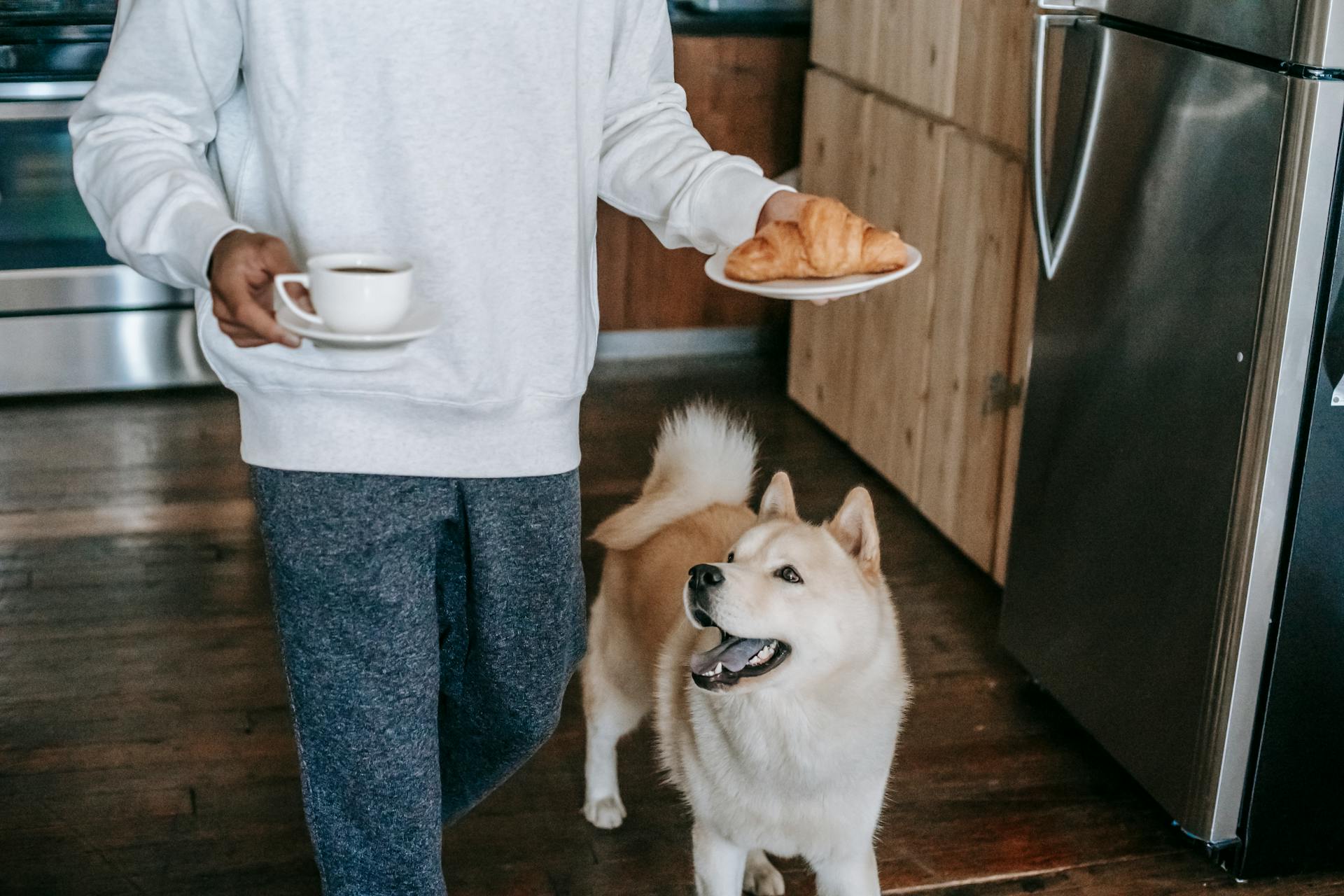
Heart disease, which encompasses various cardiac issues, is another potential concern. This can be a serious condition that requires prompt veterinary attention.
Eye conditions, which may impact their vision, are also possible. These conditions can range from mild to severe and may require regular veterinary check-ups to monitor.
Vaginal hyperplasia, a reproductive system disorder, and bloat, a potentially life-threatening gastrointestinal problem, are also potential health concerns for Boerboels.
Juvenile epilepsy, a neurological disorder, can also affect Boerboels, particularly in their younger years.
Here are some common health issues that can affect Boerboels, along with their potential causes:
Boerboels can be prone to certain health issues, but with regular veterinary check-ups and a healthy lifestyle, you can help prevent or manage these conditions.
Care
The Boerboel's main need is to be mentally and physically stimulated through exercise and play. Exercise is crucial to keep them fit and healthy, and they'll happily sit by your side all day if given the chance.
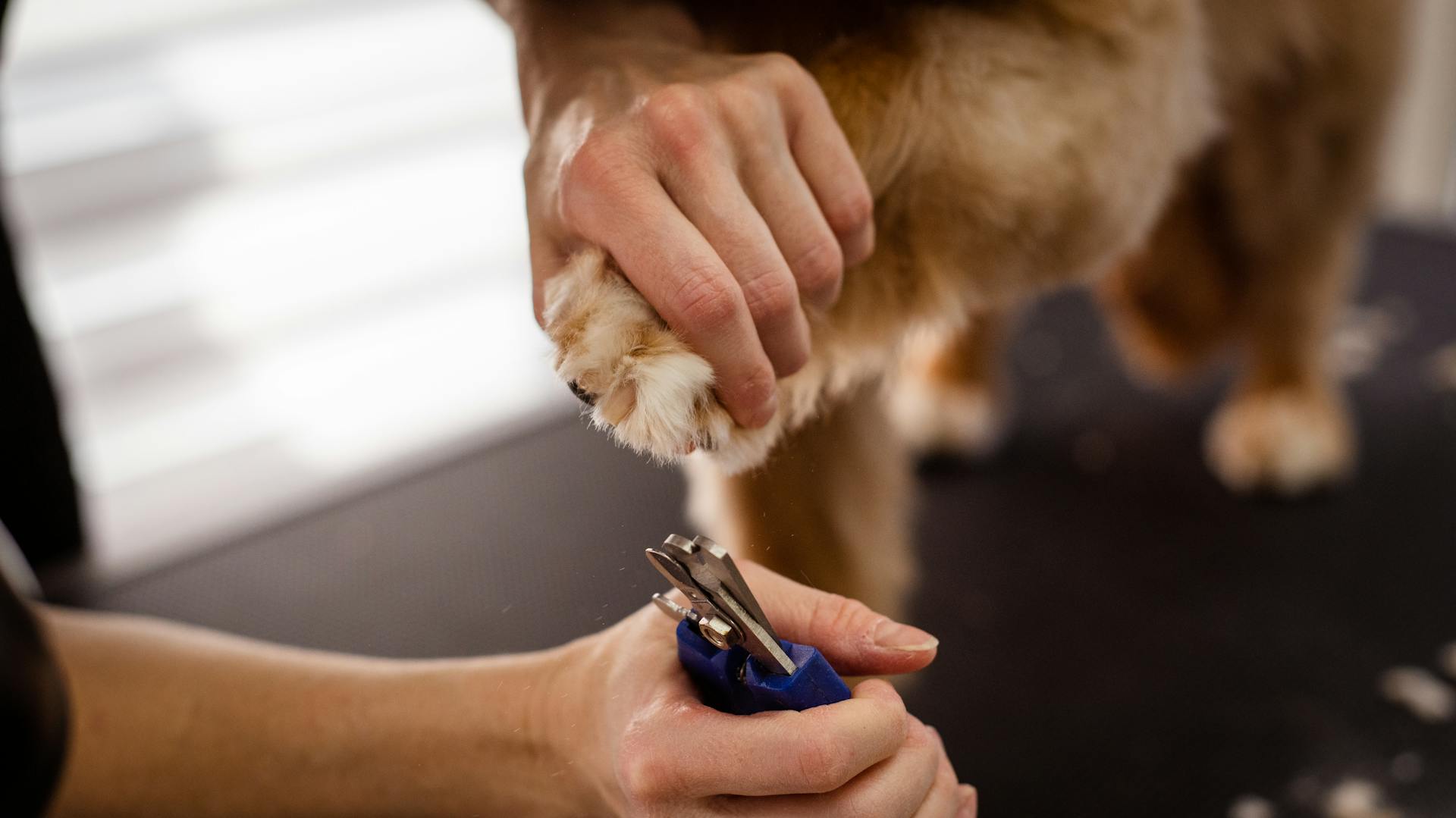
Their nails should be trimmed about once every two weeks, and their teeth should be brushed regularly as recommended by a veterinarian. Regular grooming also helps prevent ear infections by checking for debris and wax buildup weekly and cleaning as needed.
Boerboels can be challenging to manage due to their confident nature and independent thinking, so early socialization and consistent training are vital. This breed is highly devoted to their family but can put their guard up around strangers.
A home with a fenced yard is a must for this breed, as they need space to sniff and roam. They require a lot of food and space, and won't do well crammed into a little apartment.
Weekly brushing reduces shedding, and bathing is only necessary once a month. Their short, dense coat makes them easy to brush, and a monthly bath is all that's needed to keep them looking their best.
Feeding
A male Boerboel's dietary needs are quite specific. You should consult your veterinarian or professional nutritionist for advice on what to feed your Boerboel and the correct portion sizes.
Their dietary needs will change as they grow from puppyhood to adulthood and senior age. It's essential to stay on top of these nutritional requirements.
Boerboels do well on a large-breed diet that is appropriate for their current life stage. This can be puppy, adult, or senior.
Choosing the best diet for your Boerboel comes down to your individual dog's needs. Your dog's veterinarian can make recommendations based on your pup's specific medical history.
To help prevent gastric dilatation and volvulus (GDV) and bloat, feed your Boerboel multiple smaller meals throughout the day. Two or three meals are recommended.
Boerboels should not use elevated food bowls and should avoid vigorous exercise around mealtimes.
A full-grown South African Boerboel can weigh 150–200 pounds, which means they need a lot of food. Typically, this is up to about 10 cups every day.
Boerboels with growth disorders affecting their joints, such as elbow or hip dysplasia, can benefit from nutritional supplements with glucosamine and chondroitin.
Personality and Behavior
Male Boerboels are naturally protective and may be best suited for families with older children who understand how to interact with dogs.
Boerboels are highly intelligent and trainable, but they do require a strong pack leader to guide them as they grow.
Male Boerboels need plenty of mental and physical stimulation, or they can become destructive and bored.
They require daily long walks or playtime in a fenced yard to meet their needs.
Boerboels are generally calm at home, but they can become aggressive if they feel threatened or territorial.
They need to be socialized properly around other people to prevent them from becoming wary of everyone outside the family.
Male Boerboels are devoted to their owners and love to spend time with them, but they can be fiercely protective of their family and home.
They need a strong, assertive trainer who will use positive reinforcement and set boundaries without being harsh.
For more insights, see: When Do Male Dogs Start Producing Sperm
Boerboels are not ideal for first-time owners or apartment living due to their large size and exercise needs.
Male Boerboels require space to safely run around, so a high, durable fence is a must in their backyard.
They are naturally protective of their family and home, but with proper training and socialization, they can become loving and caring family pets.
9 Tips for Training a Dog
Training a male Boerboel requires patience, consistency, and positive reinforcement. These dogs can view new people and situations with suspicion, so it's essential to set boundaries and use rewards to encourage good behavior.
To start training, begin with short leash walks to help your Boerboel get used to being on a leash. Consistency is key when training a Boerboel, so try to establish a routine.
A harness is a great tool to use when training your Boerboel, as it can help distribute the force of the leash more evenly. Treats and toys can be used as rewards to motivate your dog.
Rewarding calm behavior is crucial when training a Boerboel. Give your dog a treat when they're settled and quiet, and avoid engaging them while they're in a calm state.
To socialize your Boerboel, start young and expose them to different people and environments. This will help them become more confident and less wary of new situations.
Here are some essential tools to have when training a male Boerboel:
- Short leash
- Long leash
- Harness
- Treats/toys to use as rewards
Remember to reward your Boerboel for meeting people politely and for being calm in new situations. This will help them become a well-behaved and confident companion.
Pet Care Considerations
Male Boerboels are massive dogs, reaching up to 200 pounds, so they require a lot of food and space.
A fenced yard is a must for these dogs, as they love to sniff and roam around. They won't do well crammed into a little apartment.
Boerboel puppies need early socialization and consistent training to help them be comfortable in new situations. This is crucial for their confident nature and independent thinking.
Their nails should be trimmed about once every two weeks, and their teeth should be brushed regularly as recommended by a veterinarian. This will help prevent infection or infestation by pests.
Boerboels are highly devoted to their family and can be good with children, but they can put their guard up around strangers. So, it's essential to introduce them to new people and animals in a controlled environment.
Regular ear checks are also necessary to prevent infection or infestation by pests. This should be done weekly, and their ears should be cleaned as needed.
Temperament and Family
The Boerboel is a loyal and loving companion, but it needs a strong pack leader to guide it as it grows. They are highly intelligent and trainable, but they can be quite territorial and standoffish with unfamiliar dogs.
A Boerboel's natural protective instinct makes it an excellent protector of children, but it's essential to supervise playtime and teach children how to interact with animals safely. No poking and prodding, no matter how trained and docile a Boerboel may be.
Boerboels adore human children within the family, but they may interpret play as aggression and defend their family if necessary. Early socialization can help keep their confrontational instincts in check, but they may be best suited to a home where they are the only dog.
Children and Pets
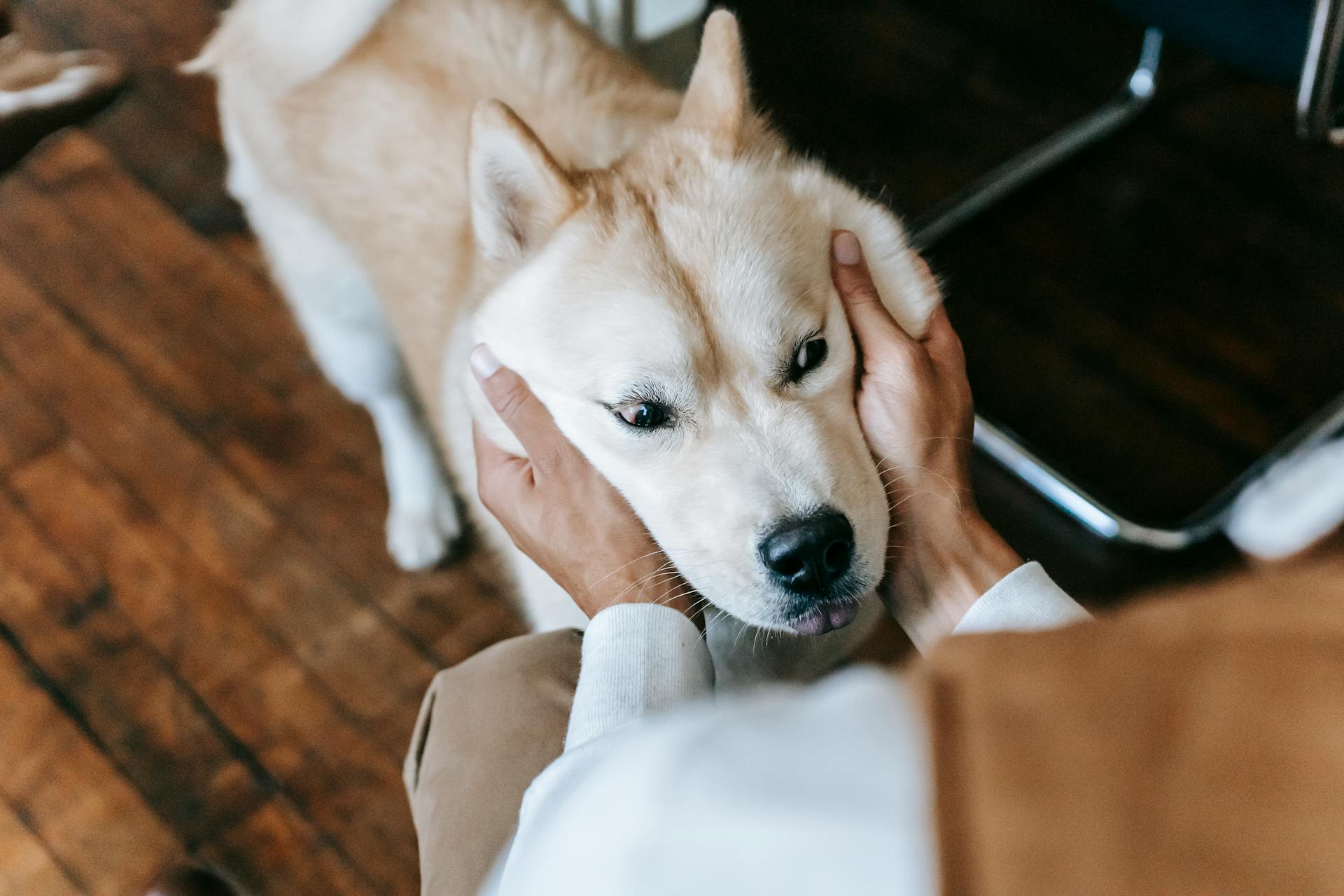
The Boerboel is a loyal and loving companion, but they do need a lot of attention and training, especially when it comes to children and other pets.
They adore their human families and are especially protective of their children, but this also means they may knock over a child by accident if things get out of hand. Children should be trained on how to interact with animals to avoid incidents.
Playtime with a Boerboel should always be supervised, as their natural protective instinct may interpret play as aggression and defend its family. This is especially true when children have playmates over.
Boerboels are also territorial and standoffish with unfamiliar dogs, and may become competitive and aggressive with other Boerboels of the same sex. Early socialization can help keep their confrontational instincts in check.
A home with a Boerboel is best suited for a family with experienced pet parents who will dedicate themselves to socializing and training their puppy. This breed requires a lot of food, space, and attention, so a little apartment is not the best fit.
Final Thoughts

If you're considering bringing a Boerboel into your family, it's essential to remember that they require proper training. Training is crucial for these ginormous dogs, and it's best suited for dog parents with some experience.
Boerboels need plenty of daily exercise to reduce their stress levels and make training easier. A bored, under-exercised dog is much harder to train and socialize than one with an outlet for pent-up energy.
Here are some key things to keep in mind when it comes to exercise and training:
- Boerboels need daily exercise to reduce stress levels and make training easier.
- A bored, under-exercised Boerboel is harder to train and socialize.
By following these guidelines and being patient with your Boerboel, you can build a strong bond and help them become a well-adjusted member of your family.
Frequently Asked Questions
How big can a male Boerboel get?
A male Boerboel typically stands between 24 and 27 inches tall and weighs between 150 to 200 pounds.
Is it better to get a male or female Boerboel?
For a more affectionate and obedient companion, consider a female Boerboel. Males, however, may require more time to mature and can be a bit more independent.
Is a Boerboel stronger than a pitbull?
Yes, Boerboels significantly outperform Pitbulls in strength, with a bite force 3.5 times stronger and a substantial weight advantage. Their impressive physical capabilities make them a formidable breed.
Featured Images: pexels.com

